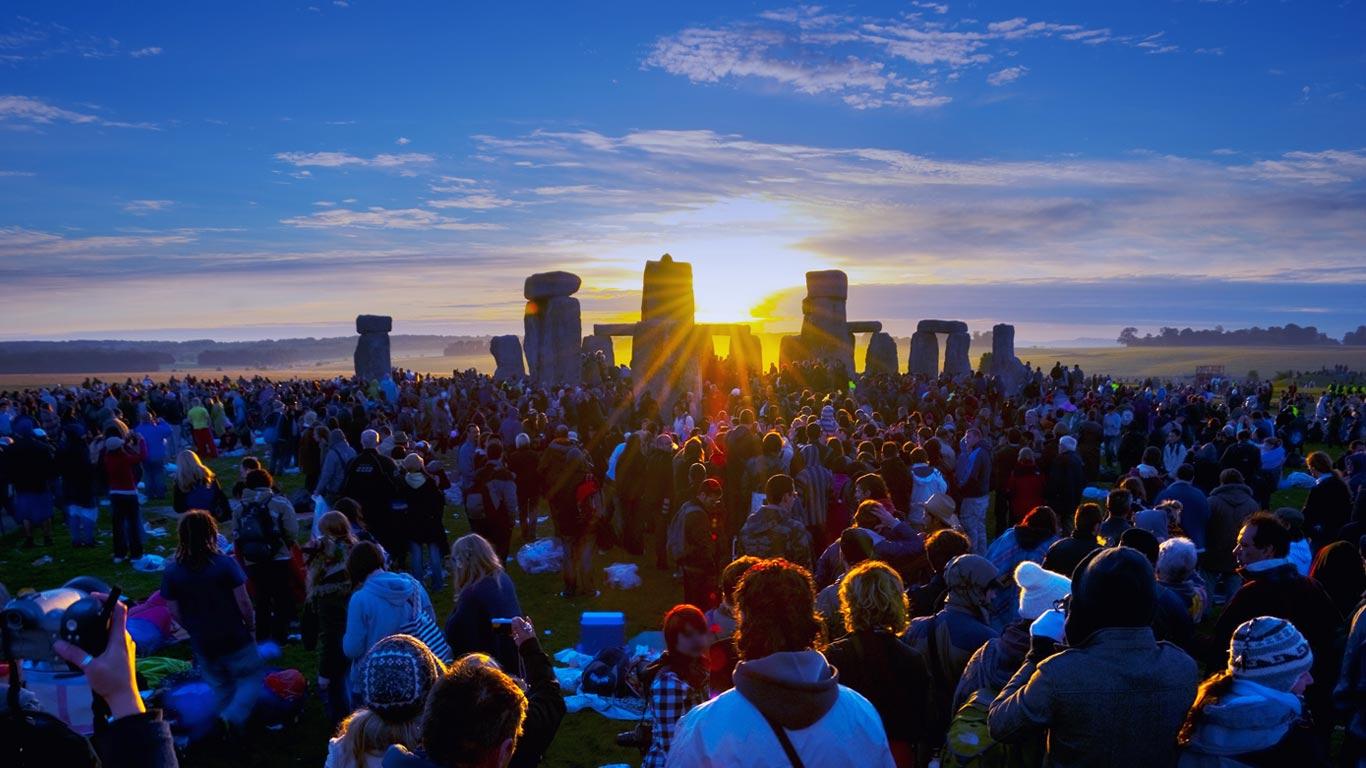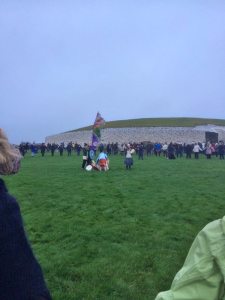For people from overseas visiting England, or even English people that want to experience something different, the summer solstice is a big draw. For anybody in or near to Salisbury on 20th and 21st June (every year), I strongly recommend a visit to Stonehenge which is a UNESCO World Heritage Site along with it’s neighbour Avebury.

The story of Stonehenge is still not 100% known, there are many theories ranging from an alien landing site to an ancient temple. While some theories hold more weight than others, none have been confirmed to be 100% true yet. However the National Trust (the body that looks after Stonehenge) has allowed for the site to be open each summer solstice, at the request of druid and other pagan communities. This is to allow the druids to celebrate the sunrise of the longest day, but the opening is not restricted to just druids, over 20,000 people attend the event each year and it really is a great atmosphere. There are acoustic instruments, dancing, hula hooping and just about any other natural form of entertainment you can think of. There are food stalls to cater for all of the hungry attendees and portable toilets around the area. With police and st. John’s ambulance in attendance people will be happy to know that they are safe. The venue usually opens at 7pm on 20th June and closes at 7am on 21st June. I have been 6 times before and I would strongly recommend this to anybody in the area.

a travel blog by Graham Targett
Full story at the ‘bigger than England’ website
U.K Solstice Events offer Stonehenge tours of the Summer Solstice, Winter Solstice, Spring Equinox and Autumn Equinox.
Stonehenge Guided Tours
http://www.StonehengeTours.com
The Winter Solstice, which takes place on 21st December in the Northern Hemisphere, is celebrated in various forms all over the world. In astronomical terms, this is the shortest day of the year, when the sun is at its lowest in the sky. After the solstice, the days begin to get longer again, and it is for this reason that it was celebrated as the beginning of a new year by pagan cultures.
I celebrated the winter solstice at Newgrange, a Neolithic passage tomb in Co. Meath, Ireland. This monument is an  astounding feat of engineering: dating from around 3,200 B.C. (that’s older than the Pyramids!) it is aligned exactly with the rising of the midwinter sun. Above the entrance to the tomb there is an opening called the roof-box. On 21st December, the light of the rising sun passes through the roof-box and travels up the narrow passage, illuminating the inner chamber.
astounding feat of engineering: dating from around 3,200 B.C. (that’s older than the Pyramids!) it is aligned exactly with the rising of the midwinter sun. Above the entrance to the tomb there is an opening called the roof-box. On 21st December, the light of the rising sun passes through the roof-box and travels up the narrow passage, illuminating the inner chamber.
Entry to the chamber on the morning of the solstice is decided by a lottery. Alas, I was not one of the lucky few chosen. Indeed, further misfortune was in store as, after having dragged myself out of bed at 6am and trekked across narrow country lanes, the weather was cloudy and the sun barely visible.
But the unlikelihood of a clear sunrise (this is Ireland, after all) did not deter the hundreds of people who turned out to welcome the new year. We were an eclectic bunch, ranging from the mildly curious to the deeply spiritual.
Dedicated believers, dressed in long cloaks with wreaths of leaves and twigs on their heads, led the welcoming of the sun. They banged drums and chanted, softly at first, the volume rising in a crescendo as the sky got gradually lighter.
Another group were gathered in a circle taking part in a guided meditation as part of a two-day retreat. As the drum-banging unofficial leaders of the celebration shepherded bemused bystanders into an enormous circle, the meditation group moved into the centre and stood facing out. Eventually they moved out to join the larger circle as the chanting reached its height, and the revellers greeted the sun (still hidden behind a cloud) with whoops and cries of ‘Happy Solstice!’
It would be difficult to find someone less spiritual than myself, and I’ll admit to finding most of the celebrations frankly a bit odd. Yet there was something undeniably refreshing about standing in that field at dawn, waiting to mark the most natural sign of the new year. It was definitely more enjoyable than the repetitive and ultimately disappointing festivities of the 31st.
Similar celebrations take place at Stonehenge, Britain’s most famous prehistoric monument, which is also aligned with the rising and setting of the sun. Huge crowds gather there annually for exuberant solstice festivities.
There is a lot of wisdom to be found in prehistoric pagan cultures. Not only have they given us some of the most awe-inspiring architectural accomplishments in the world, but they have also left us a legacy of spiritualism which has survived the advance of scientific understandings of the world.
If you come to visit Newgrange or Stonehenge just for the views and the guided tours, you might end up leaving with a new and perhaps more optimistic perspective on the coming year. Even if the sun fails to make an appearance.
By Naoise Murphy
Photograph: Naoise Murphy
Source: http://www.palatinate.org.uk/?p=53515
Stonehenge Winter Solstice Tour: Click here
Stonehenge Guided Tours
http://www.StonehengeTours.com






